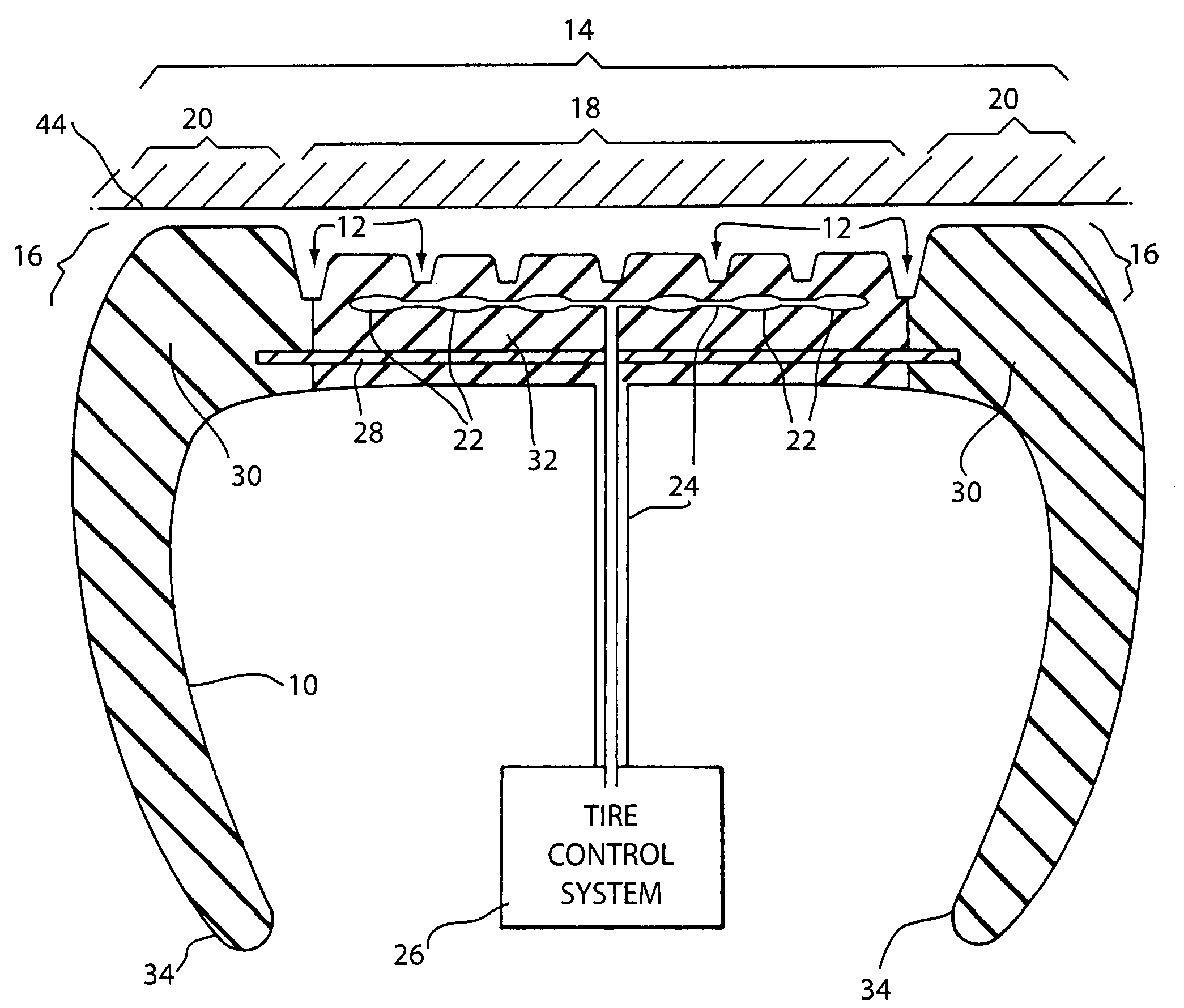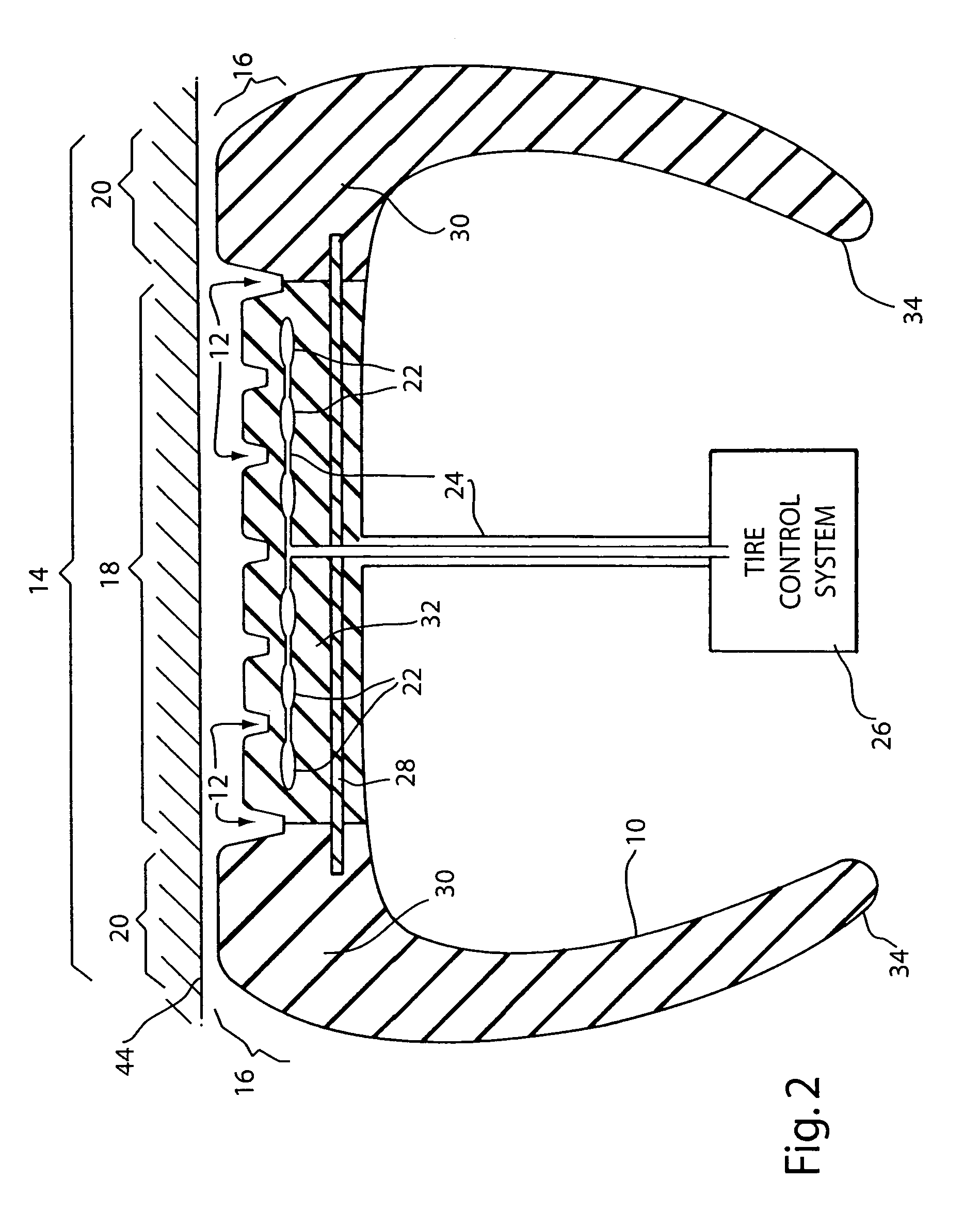Fuel efficient vehicle tire having a variable footprint and low rolling resistance
a fuel-efficient vehicle and variable-sized technology, applied in the field of pneumatic tires, can solve the problems of wasting a significant amount of energy, limiting this approach, and continuous deformation, and achieves the effects of reducing specific gas consumption, reducing rolling resistance, and increasing effective dry traction
- Summary
- Abstract
- Description
- Claims
- Application Information
AI Technical Summary
Benefits of technology
Problems solved by technology
Method used
Image
Examples
Embodiment Construction
[0072]Some preferred embodiments of the present invention can be understood with reference to FIGS. 1–5. Like numbers in the Figures refer to like elements.
[0073]The tire (10) in FIG. 1 is in the “extended” position whereas both the non-moveable tread portion (20) and the moveable tread portion (18) are in contact with the road surface (44). A tire (10) comprises circumferential grooves (12), a crown tread portion (14), a pair of tire shoulder parts (16), a moveable tread portion (18) generally comprised of softer rubber materials (32) in relation to the non-moveable tread portion and a pair of non-moveable tread portions (20) generally comprised of harder rubber compositions (30) in relation to the moveable tread portion wherein the moveable tread portion (18) and the non-moveable portions (20) are divided by circumferential groves (12). A series of expansion voids (22) are located within the moveable tread portion (18). Expansion voids (22) extend circumferentially within the tire...
PUM
 Login to View More
Login to View More Abstract
Description
Claims
Application Information
 Login to View More
Login to View More - R&D
- Intellectual Property
- Life Sciences
- Materials
- Tech Scout
- Unparalleled Data Quality
- Higher Quality Content
- 60% Fewer Hallucinations
Browse by: Latest US Patents, China's latest patents, Technical Efficacy Thesaurus, Application Domain, Technology Topic, Popular Technical Reports.
© 2025 PatSnap. All rights reserved.Legal|Privacy policy|Modern Slavery Act Transparency Statement|Sitemap|About US| Contact US: help@patsnap.com



